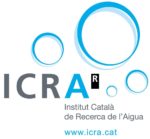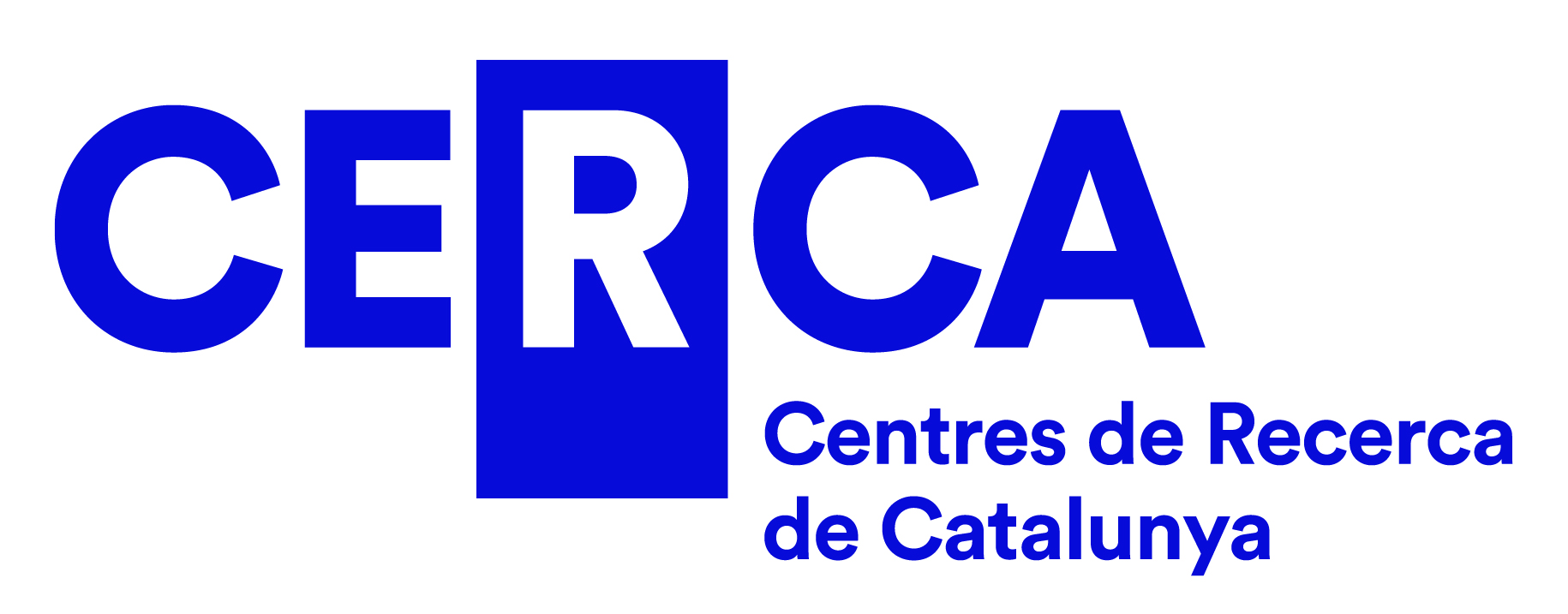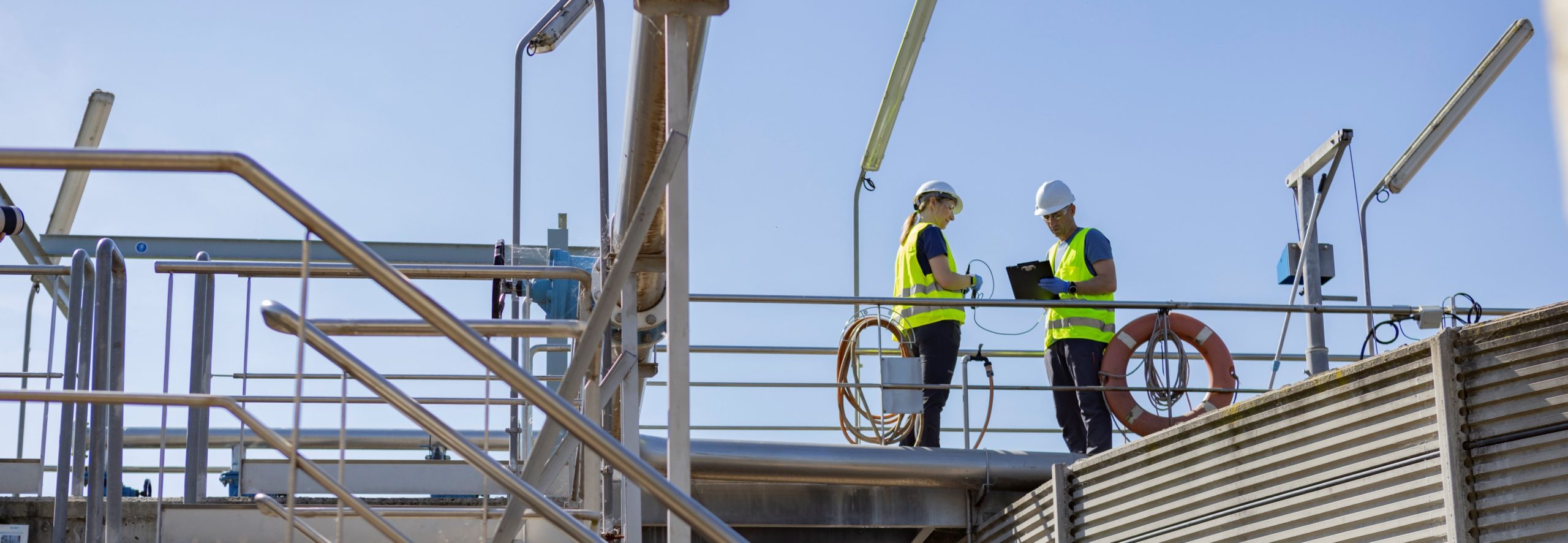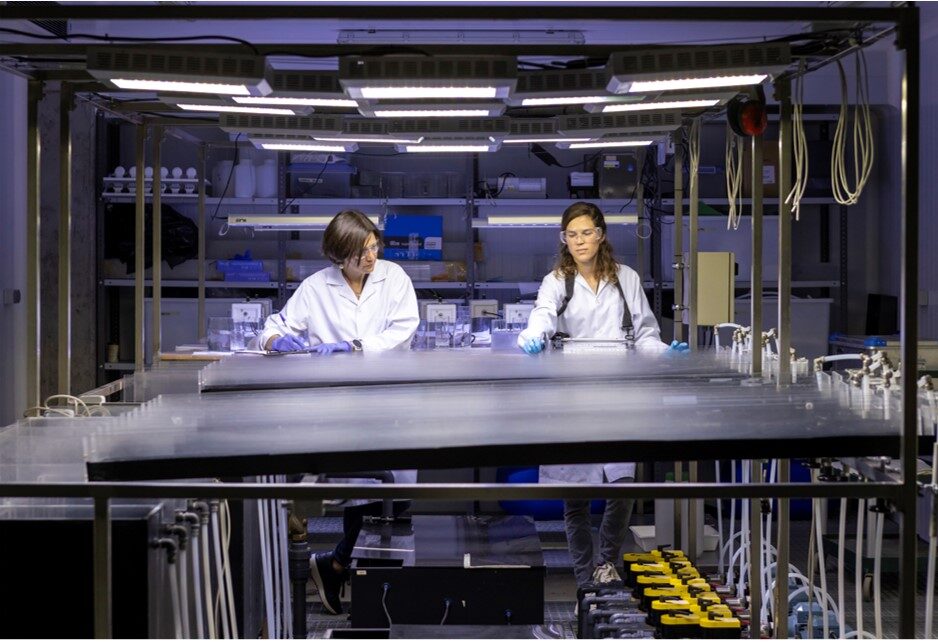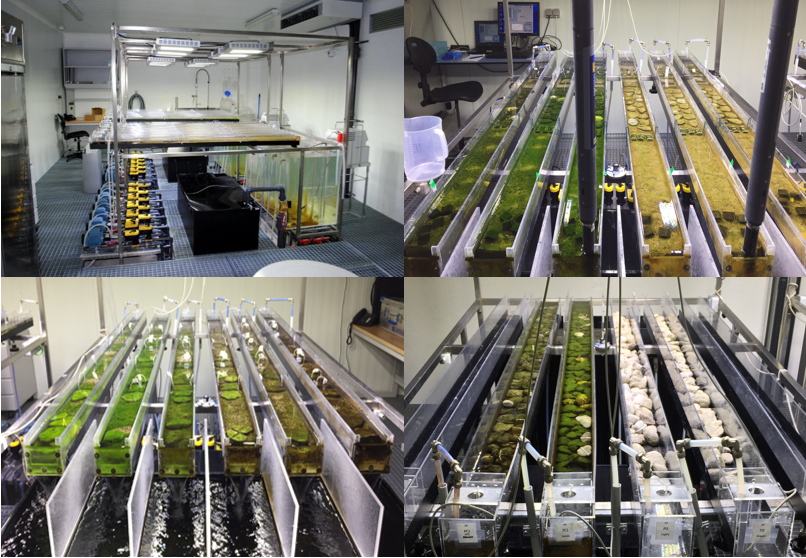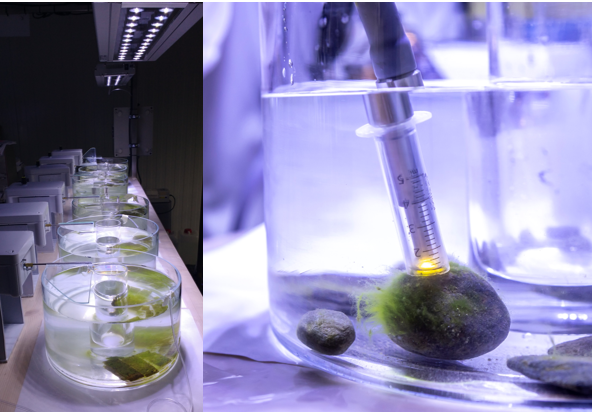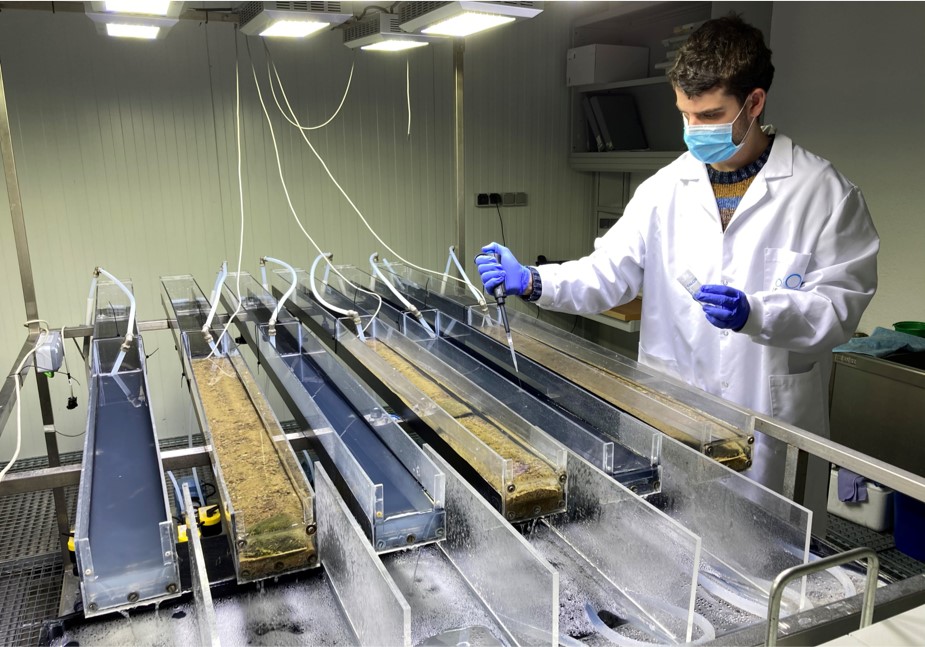The Experimental Stream Facility (ESF) is a unique platform for developing ecological and ecotoxicological research.
It consists of channels or mesocosms that allow simulating multiple river conditions and thus being able to study how river organisms and processes are affected by changes in:
- temperature
- light
- hydrology: water speed, flow…
- concentrations of chemical compounds: nutrients, pharmaceuticals, pesticides…
- biota: microorganisms, macroinvertebrates…
It is a very useful tool for studying, among others, the self-purification capacity of rivers and the impacts of drought, rising temperatures or the presence of chemical pollutants in river ecosystems.
Accumulated experience
Since its inception in 2012, the facility has enabled research in different areas, attracted the interest of international researchers and encouraged scientific collaborations. Some examples of the research developed at the facility:
- Freixa et al. 2017. Warmer night-time temperature promotes microbial heterotrophic activity and modifies stream sediment community. Global Change Biology. Doi: 10.1111/gcb.13664.
- Aristi et al. 2016. Nutrients versus emerging contaminants or a dynamic match between subsidy and stress effects on stream biofilms. Environmental Pollution 212: 208.
- Corcoll et al. 2015. Effects of flow intermittency and pharmaceutical exposure on the structure and metabolism of stream biofilms. Science of the Total Environment 503: 159.
- Acuña et al. 2015. Increasing extent of periods of no flow in intermittent waterways promotes heterotrophy. Freshwater Biology 60: 1810.





